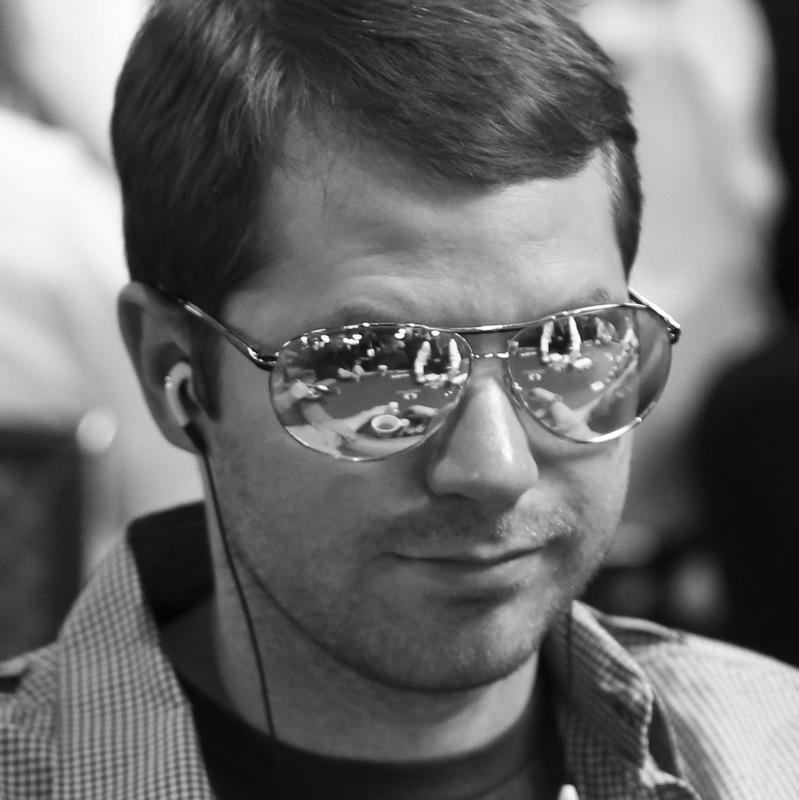






Crushing The Final Tableby Jonathan Little | Published: Feb 14, 2018 |
|
|
Card Player Magazine, available in print and online, covers poker strategy, poker news, online and casino poker, and poker legislation. Sign up today for a digital subscription to access more than 800 magazine issues and get 26 new issues per year!
I am currently in the Bahamas for the PokerStars Caribbean Adventure but this time, instead of playing, I am commentating. Today I will share with you a particularly interesting situation that illustrates a powerful way to wield a big stack at a final table.
In the $100,000 buy-in Super High Roller event, Bryn Kenney had a commanding chip lead with four players remaining, having about 80 big blinds compared to his opponents’ roughly 20 big blinds each. This is a fantastic spot for him because the three short stacks are incentivized to avoid any all-in confrontation with less than premium hands because if they outlast each other, they move up the payout ladder, which was for a huge amount of money in this event:
1st: $1,492,340
2nd: $1,077,800
3rd: $686,960
4th: $521,140
This situation often ends up being a “blind down” war because the short stacks are unlikely to win the event unless they double up, but can somewhat easily move up one or two payout jumps, especially if one of the other short stacks is making the monetary error of “playing to win.”
Taking this into account, a common tactic for the big stack is to push all-in when one of the short stacks raises, assuming the short stacks are not only raising with premium hands. If they only raise with premium hands, it allows the big stack to raise with way more than his fair share of hands, knowing he will frequently steal the blinds.
Even though Kenney had only 50 percent of the chips in play, due to the payout implications, he will win the event from this point much more often. I even said in my commentary that the only way he loses this final table is if he loses essentially every all-in.
One spot that came up somewhat frequently involved Justin Bonomo limping from the small blind with a 30-big blind stack into Kenney’s big blind. The other players at the table had about 15 big blinds. Kenney would frequently go all-in with a wide range, knowing Bonomo cannot call too often. When facing a strong opponent in the big blind, a common strategy for the small blind is to limp with a wide range and then call a raise with most reasonably playable hands. This allows the small blind to see a flop somewhat cheaply, which is a fine result. Knowing that Bonomo is likely limping with a wide range, Kenney elected to push all-in instead of raising to a lesser amount that Bonomo could call.
Going all-in for 35 big blinds into a 2.5 big blind pot (the blinds plus the antes) may seem like a giant overbet, but if Bonomo is limping with 90 percent of hands but will only call off with A-A through 8-8 and A-K through A-J, Kenney wins a huge amount of money each time he goes all-in, roughly 1.3 big blinds per hand. Kenney steals the pot immediately 92 percent of the time and then 8 percent of the time, he plays all-in for 35 big blinds, which he will usually win about 31 percent of the time with most random holdings. While this strategy will occasionally lead to large losses, it is printing money in the long run. The alternative is to check or raise to an amount less than all-in, which may also lead to decently profitable spots, but against someone as good as Bonomo, it is probably best to not let him see the flop.
So, what can the small blind do to sidestep this difficult spot? He should limp with a much tighter range, perhaps 55 percent of hands (instead of the initially proposed 90 percent). This will allow him to call an all-in more often, resulting in more frequent catastrophic losses for the big blind. It is unfortunate to have to play so tightly from the small blind, but that is what you have to do when you are out of position facing a strong player with a big stack in the big blind.
While Kenney was almost a lock to win this event, sure enough, he proceeded to lose every all-in, busting in third place. Sometimes when playing in a manner that almost ensures you win, you will crash and burn. Such is poker! ♠

Jonathan Little
Features
The Inside Straight
Strategies & Analysis
Commentaries & Personalities